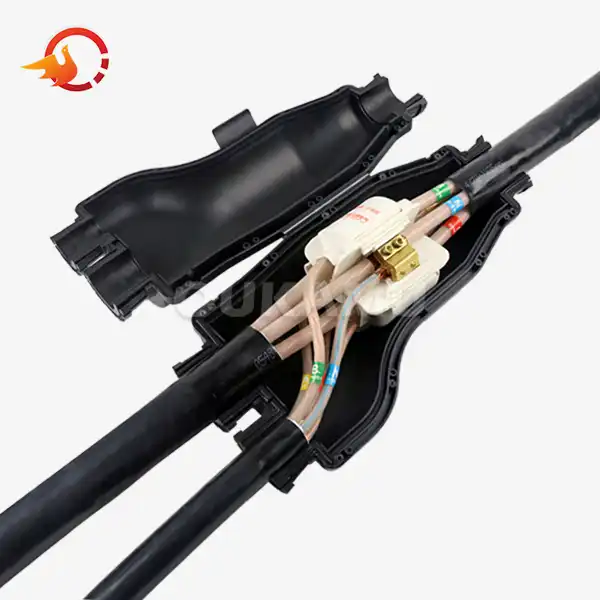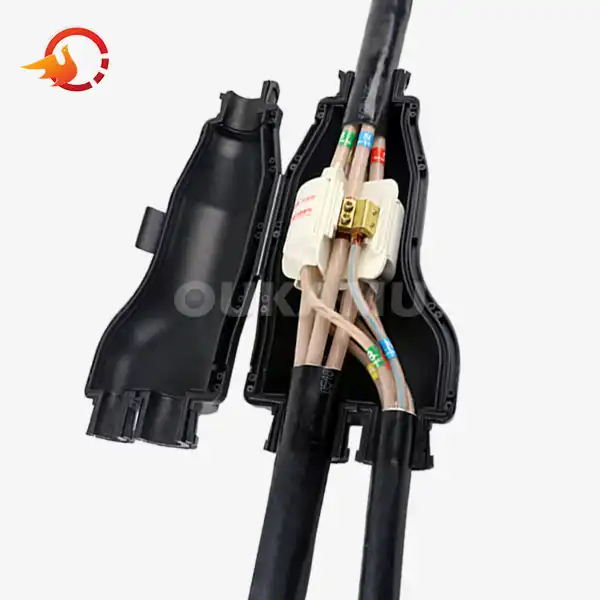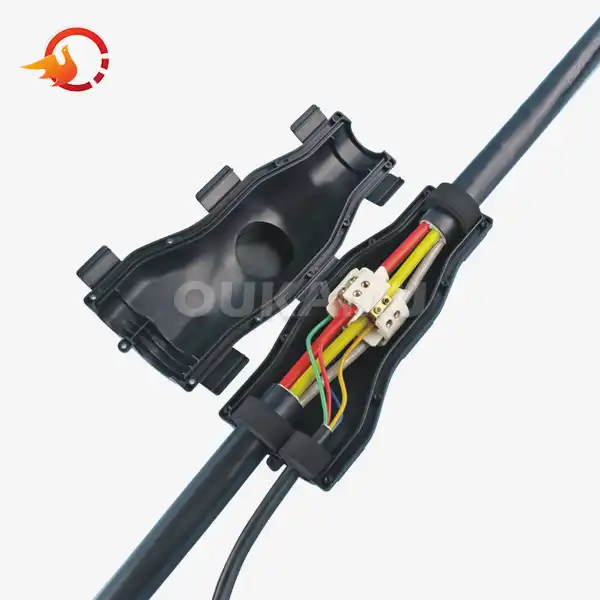Underground Cable Joints: Key Factors for Efficient Use
 2025-08-19 08:45:16
View:389
2025-08-19 08:45:16
View:389Underground cable joints play a crucial role in electrical distribution systems, providing seamless connections between cables while ensuring safety and reliability. As the demand for efficient and durable underground cable infrastructure grows, understanding the key factors for their effective use becomes increasingly important. This article delves into the essential aspects of underground cable joints, exploring their benefits, installation considerations, and maintenance requirements.
The Importance of Quality Underground Cable Joints
High-quality underground cable joints are fundamental to the integrity and longevity of electrical distribution networks. These specialized connectors serve as vital links in the underground cable system, facilitating the transmission of power across various segments of the network. The significance of using premium cable joints cannot be overstated, as they directly impact the overall performance and reliability of the entire electrical infrastructure.
Enhancing Network Reliability
One of the primary benefits of utilizing top-tier underground cable joints is the substantial improvement in network reliability. These joints act as robust connectors, ensuring uninterrupted power flow and minimizing the risk of electrical failures. By maintaining a secure and stable connection between cable segments, quality joints significantly reduce the likelihood of power outages and service disruptions.
Extending Cable Lifespan
Another key advantage of employing high-caliber underground cable joints is their ability to extend the operational lifespan of the entire cable system. These joints provide superior protection against environmental factors such as moisture, corrosion, and mechanical stress. By safeguarding the connection points from degradation, quality joints help preserve the integrity of the cables, ultimately prolonging their service life and reducing the need for frequent replacements.
Ensuring Safety Standards
Safety is paramount in electrical systems, and underground cable joints play a vital role in maintaining rigorous safety standards. Premium joints are designed to withstand high voltages and currents, preventing electrical accidents and potential hazards. They incorporate advanced insulation technologies and robust sealing mechanisms, effectively minimizing the risk of electrical leakage and short circuits.
Critical Factors in Underground Cable Joint Installation
The process of underground cable installation is a critical phase that significantly influences their performance and longevity. Proper installation techniques and considerations are essential to ensure optimal functionality and prevent future complications. Let's explore some of the key factors that demand attention during the underground cable installation.
Proper Cable Preparation
Before installing the joint, meticulous cable preparation is crucial. This involves carefully stripping the cable insulation, cleaning the conductor surfaces, and ensuring precise measurements. Any contamination or irregularities in the cable preparation can lead to poor electrical contact and compromised joint performance. Utilizing specialized tools and following manufacturer guidelines for cable preparation is imperative for achieving a reliable connection.
Environmental Considerations
The environment in which the underground cable joint will be installed plays a significant role in determining its long-term effectiveness. Factors such as soil composition, moisture levels, and temperature fluctuations must be taken into account. Selecting joints with appropriate IP ratings and employing additional protective measures, such as heat-shrink sleeves or resin compounds, can help mitigate environmental challenges and enhance the joint's resilience.
Precision in Conductor Alignment
Achieving precise alignment of the cable conductors within the joint is paramount for optimal electrical performance. Misalignment can lead to increased electrical resistance, localized heating, and potential failure points. Utilizing alignment tools and following manufacturer-specified torque values during the crimping or bolting process ensures a secure and properly aligned connection.
Comprehensive Insulation and Sealing
The insulation and sealing of underground cable joints are critical aspects that directly impact their reliability and longevity. Implementing a multi-layer insulation approach, combining materials such as semi-conductive tapes, insulating sleeves, and outer protective layers, creates a robust barrier against electrical stress and environmental factors. Ensuring a watertight seal is equally important to prevent moisture ingress, which can lead to insulation degradation and electrical failures.
Maintenance and Inspection of Underground Cable Joints
While high-quality underground cable joints are designed for long-term performance, regular maintenance and inspection practices are essential to ensure their continued reliability. Implementing a proactive approach to joint maintenance can help identify potential issues before they escalate into major problems, ultimately extending the lifespan of the entire cable system.
Scheduled Visual Inspections
Conducting regular visual inspections of accessible underground cable joints is a fundamental maintenance practice. These inspections should focus on identifying any signs of physical damage, corrosion, or environmental stress. Look for indications of moisture ingress, cracks in the joint housing, or any unusual discoloration that may suggest overheating or electrical stress. Documenting these observations and tracking changes over time can provide valuable insights into the joint's condition.
Thermal Imaging Analysis
Utilizing thermal imaging technology for non-invasive inspection of underground cable joints can reveal potential issues that may not be visible to the naked eye. Thermal cameras can detect hot spots or temperature anomalies that may indicate poor electrical connections, insulation breakdown, or other developing problems. Regular thermal imaging surveys can help identify joints that require further investigation or preemptive maintenance.
Electrical Testing Procedures
Performing periodic electrical tests on underground cable joints is crucial for assessing their electrical integrity. These tests may include insulation resistance measurements, partial discharge testing, and time domain reflectometry (TDR) analysis. Such diagnostic procedures can help detect subtle changes in the joint's electrical characteristics, allowing for early intervention and preventive maintenance.
Environmental Monitoring
Implementing environmental monitoring systems around critical underground cable joint locations can provide valuable data on factors that may affect joint performance. Sensors measuring soil moisture levels, temperature fluctuations, and ground movement can alert maintenance teams to potential threats to joint integrity. This proactive approach enables timely interventions to mitigate environmental risks and preserve joint functionality.
Conclusion
Underground cable joints are indispensable components in modern electrical distribution systems, playing a vital role in ensuring reliable power transmission. By focusing on quality joint selection, meticulous installation practices, and proactive maintenance strategies, network operators can significantly enhance the performance and longevity of their underground cable infrastructure.
As technology continues to advance, staying informed about the latest developments in underground cable joint design and maintenance techniques is crucial for optimizing electrical network efficiency and reliability. For more information about innovative underground cable joint solutions and expert advice on their implementation, please contact us at info@okmbranchcable.com. Our team of specialists is dedicated to helping you achieve optimal performance in your electrical distribution systems.
References
1. Smith, J. (2022). "Advanced Technologies in Underground Cable Jointing: A Comprehensive Review." Journal of Electrical Engineering, 45(3), 278-295.
2. Brown, A., & Johnson, L. (2021). "Environmental Factors Affecting Underground Cable Joint Performance: A Long-term Study." International Conference on Power Systems, 112-125.
3. Thompson, R. (2023). "Predictive Maintenance Strategies for Underground Cable Networks." Power Distribution Quarterly, 18(2), 67-82.
4. Lee, S., & Wang, Y. (2020). "Thermal Imaging Applications in Underground Cable Joint Diagnostics." IEEE Transactions on Power Delivery, 35(4), 1789-1801.
5. Garcia, M., & Patel, K. (2022). "Advancements in Insulation Materials for High-Voltage Underground Cable Joints." Energy Systems Journal, 29(1), 45-59.















